
Where We Be
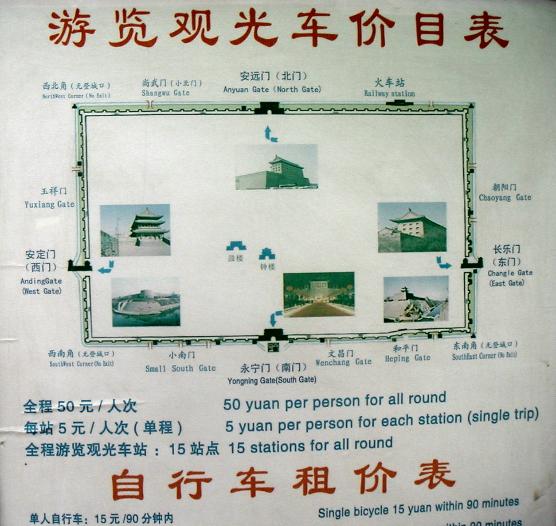
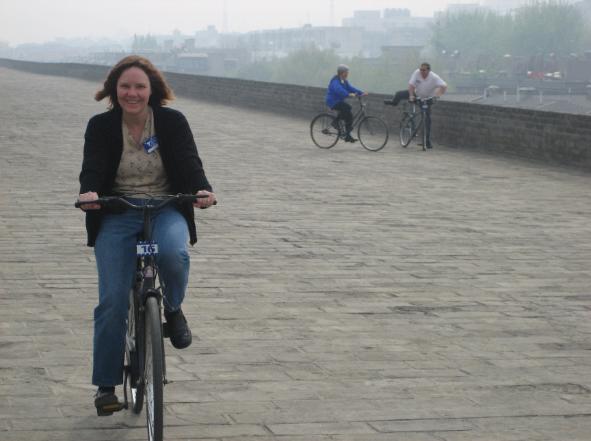
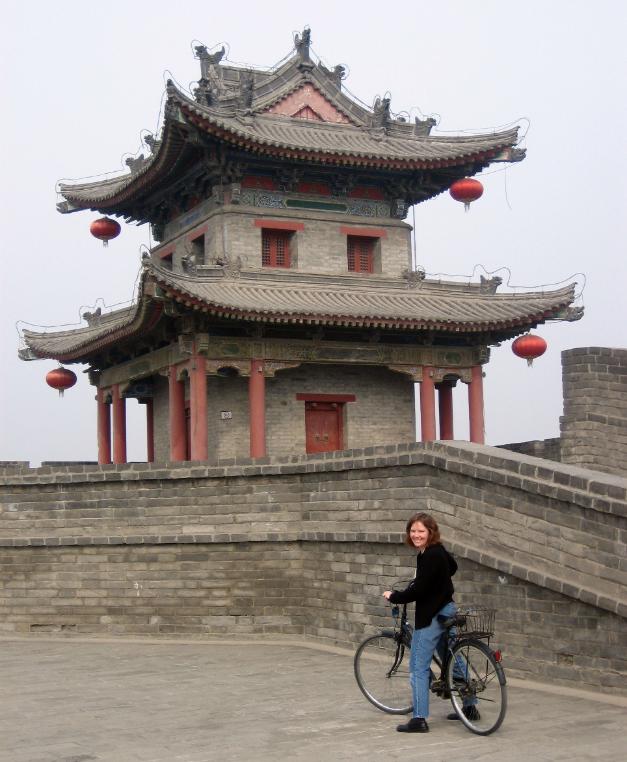
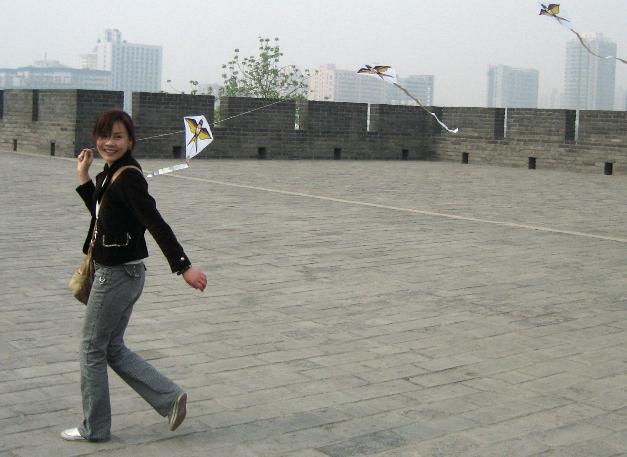
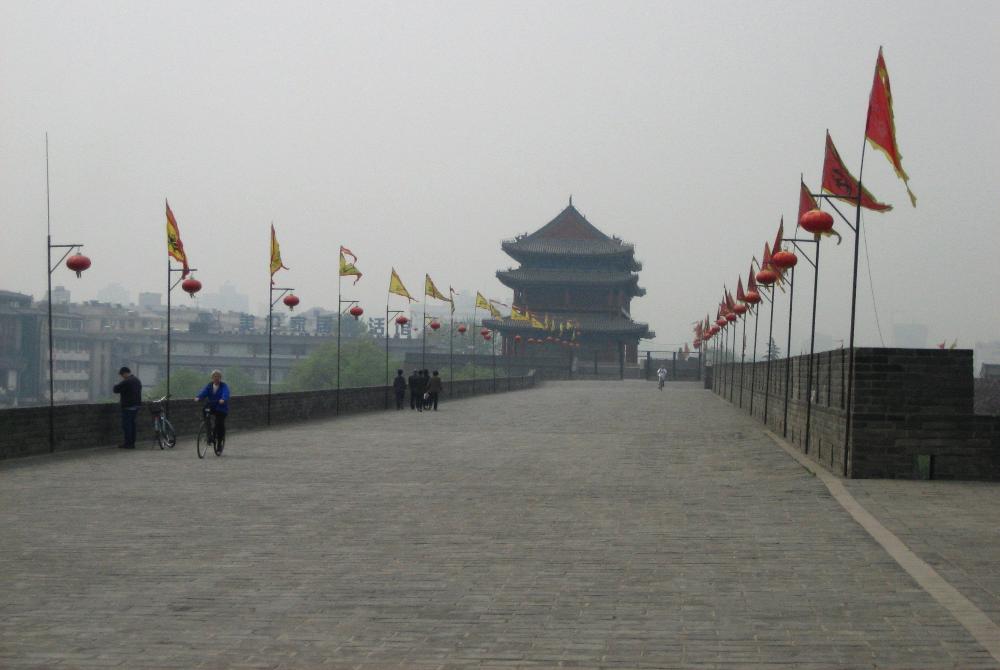

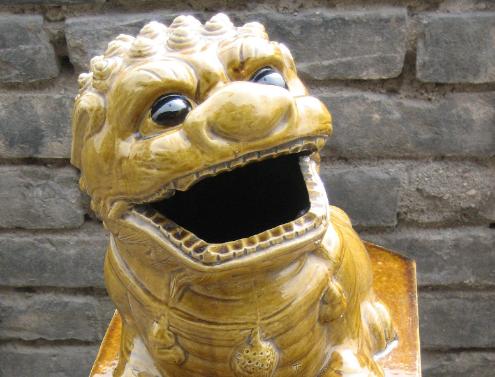
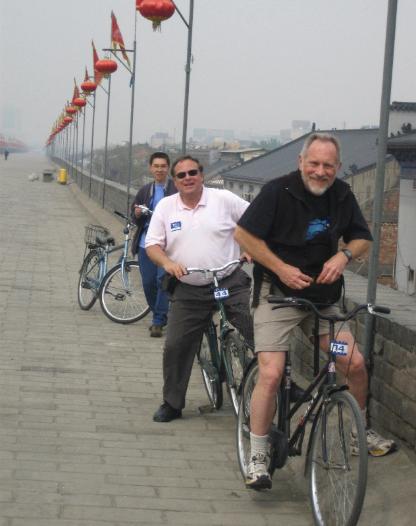
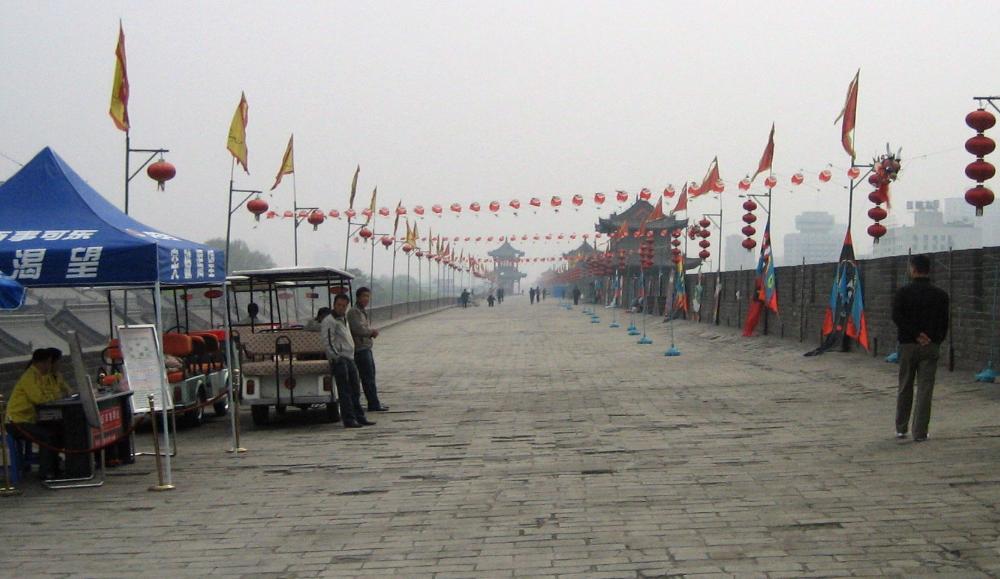
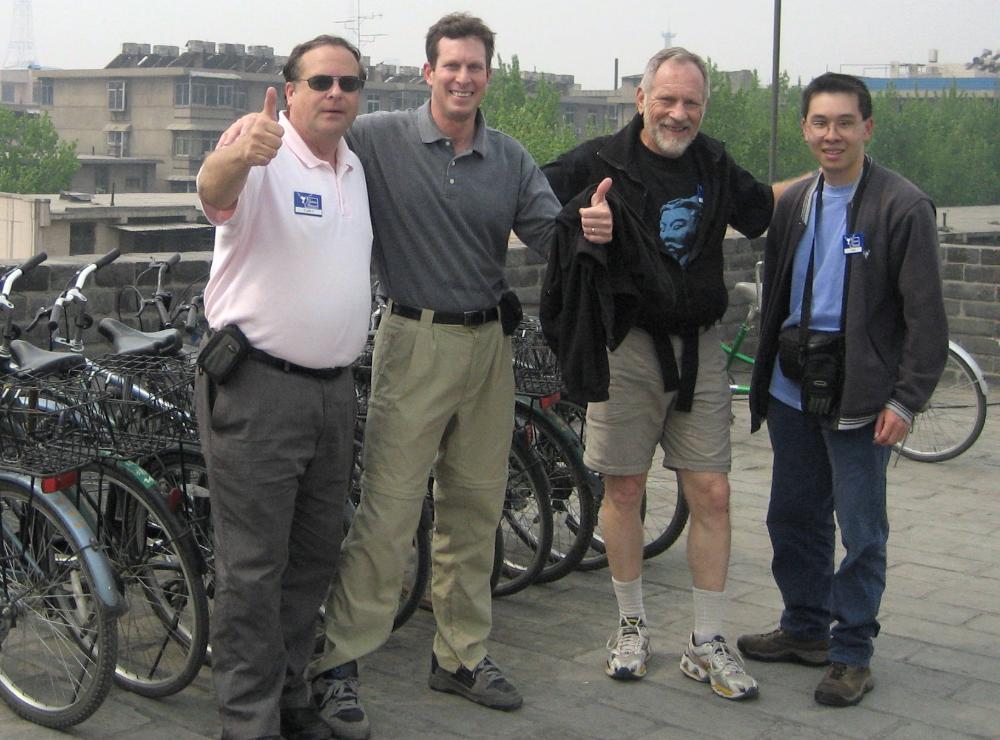
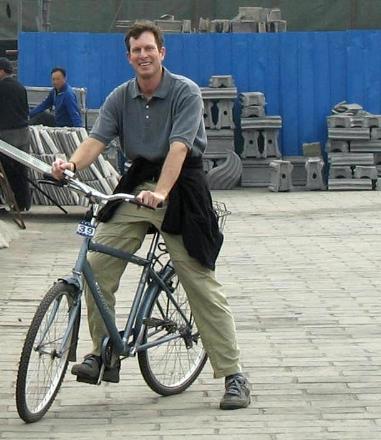
| We pass this young Chinese woman flying a string of six or seven small kites behind her and can’t resist circling back to request a photo |
| Xi'an City Wall, China |
Xi'an's city wall is the most complete and best
preserved city wall in China. Built during the
Ming Dynasty (1368-1644), it's one of the largest
ancient military defensive systems in the world
today. Standing 40 feet tall, 40 feet wide at the
top, and 50 feet thick at the bottom, it makes an
unbroken circle around the center of Xi'an
stretching for nearly 9 miles. We climb steep
stairs to the top and are instantly surprised at
how roomy it is on top. Originally designed to
allow armies to move rapidly to whatever part of
the wall was under attack, today it is a promen-
ade enjoyed by strolling tourists and bicyclists.
We rent bikes and set off on a leisurely journey
of exploration. It's perfectly flat so the cycling is
easy. But what begins as a casual outing turns
more intense once a few of us decide to circle
the entire wall in too little time. Well, we make it
back but are 30 minutes late and red-faced both
from embarrassment and exertion. Our guide
takes it all in stride, though. “In my 10 years of
leading tour groups,” he announces, “these
four are the first to have made it all the way
around the entire wall. Even I haven’t done this,
and I am from Xi’an.” The rest of the group
claps, which makes it even more embarrassing!
preserved city wall in China. Built during the
Ming Dynasty (1368-1644), it's one of the largest
ancient military defensive systems in the world
today. Standing 40 feet tall, 40 feet wide at the
top, and 50 feet thick at the bottom, it makes an
unbroken circle around the center of Xi'an
stretching for nearly 9 miles. We climb steep
stairs to the top and are instantly surprised at
how roomy it is on top. Originally designed to
allow armies to move rapidly to whatever part of
the wall was under attack, today it is a promen-
ade enjoyed by strolling tourists and bicyclists.
We rent bikes and set off on a leisurely journey
of exploration. It's perfectly flat so the cycling is
easy. But what begins as a casual outing turns
more intense once a few of us decide to circle
the entire wall in too little time. Well, we make it
back but are 30 minutes late and red-faced both
from embarrassment and exertion. Our guide
takes it all in stride, though. “In my 10 years of
leading tour groups,” he announces, “these
four are the first to have made it all the way
around the entire wall. Even I haven’t done this,
and I am from Xi’an.” The rest of the group
claps, which makes it even more embarrassing!
| We couldn't get over how roomy the wall was on top |
| There aren't many places where you can take a bike ride atop a city wall built in the 1300s! |
| Simple map of the city wall at the bike rental kiosk on top of the wall |
| Ramparts with sentry buildings are placed at regular intervals to defend the wall against attackers |
| Chinese lanterns and small statues like this one add touches of interest as you make your way around |
| The bricking gets less smooth at the three-quarters mark, but the "finish line" is almost in sight |
| We arrive a half-hour late, huffing and puffing and more than a little embarrassed, but also happy after our adventure |
As we return from the city wall, Tony tells us
about growing up in Xi'an in a very poor part of
town. “Every evening I had five choices of
meals,” he tells us. “As a young child, I would
visit each of my aunts and see what each one
was cooking to find the meal I wanted most.”
Since his house had no heat or AC, families
would gather in the courtyard when it was hot,
and there was no choice but to go to bed early
when it was cold. There was no TV. “I remember
my dad made a TV out of parts and I was very
proud of him for that. We were the first family in
the neighborhood to have TV. Everyone would
gather around to watch.” He remembers
watching Man from Atlantis -- the first American
TV program ever shown in China. Patrick Duffy
is still a big star in mainland China to this day.
The greatest hardship he remembers is 27
people sharing two bathrooms. He can still
recall the cough signal used to see if someone
was already in there. There was no tap water in
the houses, so you had to go to a central water
station. Every morning he would get up at 4 am
to get water for his family, over a mile away.
This was in the early 1980s. Despite the
hardships, he remembers this as an idyllic time
because he was so close to his extended family.
The Cultural Revolution was just coming to an
end when he was a boy. Tony recalls that in the
factory where his mom worked, people were
afraid they would be singled out to be punished
publicly because of some questionable aspect
in their family history. Anything that smacked of
higher education, Western culture, or prior
land ownership was enough to get you into
trouble. If you had a teacher as an ancestor,
for instance, you could risk being publicly
humiliated. This is pretty amazing when you
realize Tony is younger than we are and has
lived through all these changes.
about growing up in Xi'an in a very poor part of
town. “Every evening I had five choices of
meals,” he tells us. “As a young child, I would
visit each of my aunts and see what each one
was cooking to find the meal I wanted most.”
Since his house had no heat or AC, families
would gather in the courtyard when it was hot,
and there was no choice but to go to bed early
when it was cold. There was no TV. “I remember
my dad made a TV out of parts and I was very
proud of him for that. We were the first family in
the neighborhood to have TV. Everyone would
gather around to watch.” He remembers
watching Man from Atlantis -- the first American
TV program ever shown in China. Patrick Duffy
is still a big star in mainland China to this day.
The greatest hardship he remembers is 27
people sharing two bathrooms. He can still
recall the cough signal used to see if someone
was already in there. There was no tap water in
the houses, so you had to go to a central water
station. Every morning he would get up at 4 am
to get water for his family, over a mile away.
This was in the early 1980s. Despite the
hardships, he remembers this as an idyllic time
because he was so close to his extended family.
The Cultural Revolution was just coming to an
end when he was a boy. Tony recalls that in the
factory where his mom worked, people were
afraid they would be singled out to be punished
publicly because of some questionable aspect
in their family history. Anything that smacked of
higher education, Western culture, or prior
land ownership was enough to get you into
trouble. If you had a teacher as an ancestor,
for instance, you could risk being publicly
humiliated. This is pretty amazing when you
realize Tony is younger than we are and has
lived through all these changes.
| Bus Chat #6: On Patrick Duffy & Bathroom Coughs |
| These intrepid adventurers joined me in circling the entire wall |